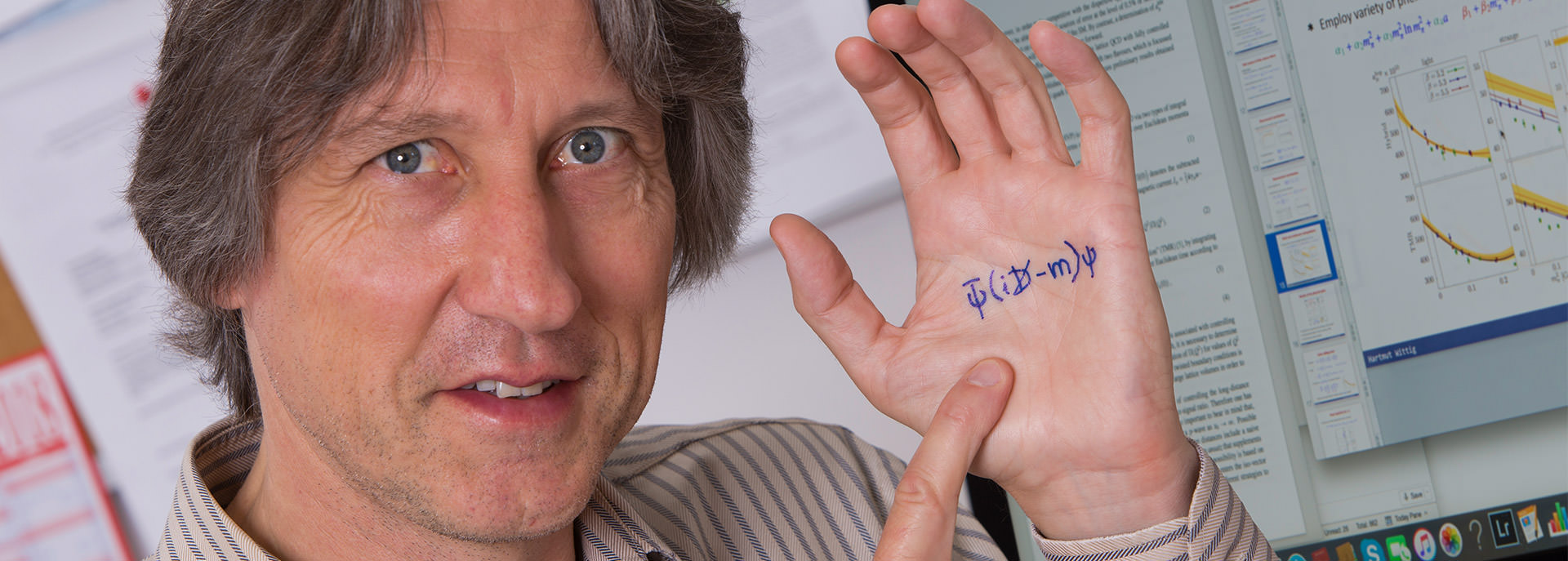Calculations based on fundamental theories of particle physics could help solve the so-called proton radius puzzle. Now, for the first time, a team of theoretical physicists at Johannes Gutenberg University Mainz (JGU) around Professor Hartmut Wittig have succeeded in making their calculations accurate enough to provide a clue: The latest findings point towards a smaller proton radius.
All known atomic nuclei consist of protons and neutrons, yet many of the characteristics of these ubiquitous nucleons remain to be understood. Specifically, despite several years of effort, scientists have been unable to pin down the radius of the proton. In 2010, the result of a new proton radius measurement technique involving laser spectroscopy of muonic hydrogen caused a stir – in this 'special' kind of hydrogen, the electron in the shell of the atom was replaced by its heavier relative, the muon, which is a much more sensitive probe for the proton's size. The experimentalists came up with a significantly smaller value than that found following corresponding measurements of 'normal' hydrogen as well as the traditional method of determining the proton radius using electron-proton scattering. The big question that physicists have been asking ever since is whether this deviation could be evidence for new physics beyond the Standard Model or 'simply' reflects systematic uncertainties inherent to the different measuring methods.
Theoretical calculations play an important role in shedding light on the situation and deciding on the relevance of the various results. A group of physicists at the PRISMA+ Cluster of Excellence at Mainz University is currently focusing on the so-called electromagnetic form factors. "These have to be determined using just the underlying theory of quantum chromodynamics," explained Professor Hartmut Wittig. "This means that we compute these quantities without including experimental data in our calculations." Electromagnetic form factors describe the spatial distribution of electrical charge and magnetization within the proton. Their measurement also forms the basis for the experimental determination of the proton radius in electron-proton scattering experiments. They therefore represent an important piece of the proton radius puzzle.
Describing the interplay of forces within the atomic nucleus
Quantum chromodynamics (QCD) is concerned with the interplay of forces within the nucleus. The strong interaction binds the quarks, the elementary building blocks of matter, to form protons and neutrons and is mediated by gluons which act as exchange particles. In order to be able to treat these processes mathematically, the scientists at Mainz draw on what is called lattice field theory. In this case, as if in a crystal, the quarks are distributed over the points of a discrete space-time lattice. Special simulation methods can then be used to calculate the properties of the nucleons using supercomputers.
"Recently there have been many efforts to determine the size of the proton using lattice calculations but to date the outcomes have not been accurate enough to identify which is likely to be more reliable; the result of muonic hydrogen measurement or the result obtained from electron proton scattering," Wittig pointed out. "Now, for the first time, we have calculated the electromagnetic form factors so precisely that we are able to contribute to the proton radius debate."
Once the form factors have been computed, the proton radius can be derived. The result is a further indication that the proton is probably smaller than what was thought before and represents the first time such evidence has been obtained using a method independent of the previous measurements. However, the physicists still cannot rule out the larger value entirely. "The margin for error in our calculations is small enough to enable us to favor the smaller radius, but still too big to allow us to completely eliminate the larger value," concluded Professor Hartmut Wittig. "At the same time, we already have ideas as to how we can increase the accuracy of our calculations even further."
Publication
D. Djukanovic et al., Isovector electromagnetic form factors of the nucleon from lattice QCD and the proton radius puzzle, arXiv:2102.07460 (hep-lat)



